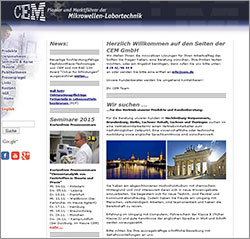Our Blog
Justyna KAŹMIERCZAK-RAŹNA, Piotr NOWICKI, Robert PIETRZAK Uniwersytet im. Adama Mickiewicza w Poznaniu, Wydział Chemii Pracownia Chemii Stosowanej ul. Umultowska 89b, 61-614 Poznań
The Use of Microwave Radiation in Preparation of the Carbonaceous Adsorbents
Activated carbons from low quality hay were obtained with the use of microwave heat-ing and applied as adsorbents of gaseous pollutants of acidic character. The precursor was subjected to pyrolysis at 400ºC in nitrogen atmosphere and next to physical activation with CO2 at 500÷700ºC. The influence of process variables such as the temperature and activation time on elemental composition, textural parameters, chemical character of the surface and sorption properties of the products obtained was studied. The sorption properties of the activated carbons obtained were characterized by determination of hydrogen sulphide and nitrogen dioxide adsorption from the flux of gases, in dry and wet conditions. Depending on the procedure of activation, the final products were microporous carbons of rather low sur-face area ranging from 218 to 325 m2/g and pore volume from 0.16 to 0.22 cm3/g, showing clearly basic character of the surface. The results obtained in our study have proved that by activation of biodegradable waste materials it is possible to produce carbonaceous adsor-bents with relatively high sorption ability toward toxic gases, reaching to 20.9 and 46.8 mg/g for hydrogen sulfide and nitrogen dioxide, respectively. The results have also showed that effectiveness of H2S and NO2 removal from the flux of gases depends on a large extent on the temperature and time of activation as well as adsorption conditions. All materials under investigation showed higher sorption capacity towards both gases in wet conditions, when steam was present in the gas stream. The results obtained in our study have also proved that after a suitable optimization of carbonaceous sorbents production procedure, activation with the use of microwave radiation may be a cheaper and faster alternative for conventional heating applied nowadays.
Keywords: activated carbons, microwave radiation, adsorption from gas phas









